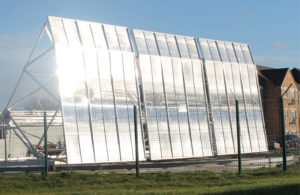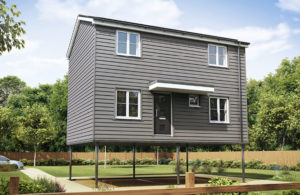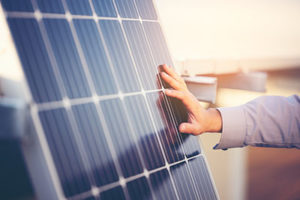Research and Development
Forward thinking - Our current research and development (R&D) projects have the potential to revolutionise the construction industry with innovative techniques for low-cost building and to make a major contribution to tackling global warming.
Larkfleet Group X House
Larkfleet Group X House introduces a brand-new solution to sustainable urban living with the development of the X Park. Larkfleet Group have created a structure allowing people to live in prime locations around the UK above pre-existing fully operational car parks.
X Group developments can be erected quickly with minimal disruption to the existing car park and minimal intrusion into the ground. We intend to create communities in pockets of cities and town centres ideal for young professionals, key workers, individuals in need of temporary housing and city commuters. With great transport links, social and economic opportunity the product allows development in areas that simply wouldn’t be possible without losing the use of existing land. The X Group provides an effective solution for developments in any restricted space. This could be hotels increasing capacity using their existing car parking space. We have a range of house type options available, suitable for disability living, families, young professionals and more bespoke units that can be used commercially.
X Group aims to challenge current consumption and encourage whole communities to live smarter and greener. To limit the requirement for grid connection the X Group will use a range of Smart Home technologies developed by Larkfleet’s R&D team with the intention to hit the net zero carbon target. The ever-increasing importance of with how we live, consume and travel and its impact on the environment, plays a vital role in the X Group design. We have integrated efficient living with green consumption, green spaces and electric vehicle charging infrastructure. Meaning homes and car parks are fit for the future.
The X Group provides a different outlook on our homes, our lifestyle choices, and our communities. How we use public transport, local services and hire cars, that often in abundance in urban areas, there is now a unique product allowing prime location living with no extortionate cost attached. The X Group enable development and rejuvenation in urban areas meaning no encroachment on green countryside, more efficient use of space and incorporating advanced MMC.
Solar Steam
The Larkfleet Solar Steam technology, developed in association with Cranfield University, concentrates the power of the sun’s rays to heat water to create steam which can be used in industrial processes or for power generation. It works by focusing the sun’s rays through a Fresnel lens array onto a tube which contains water.
The angle of the lens array can be adjusted through a vertical axis to track the sun and is seated on a circular track which allows the array also to follow the sun’s progress horizontally across the sky. By tracking in both planes, the system maintains maximum levels of solar radiation concentrated on the tube.

Solar Steam builds on existing ideas about using solar radiation to generate heat and takes them a step further. We have been granted a UK and international patents. Potential for renewable power generation using a Solar Steam array is greatest in sunny regions like southern Europe and Asia.
Power generation companies can use Solar Steam to increase renewable heat input and reduce energy costs. Industrial facilities that use fossil fuels to provide the thermal energy required for their processes can instead install the Larkfleet Solar Steam collector to generate low carbon heat. The Solar Steam system can also be used in desalination, the process of removing salt from water to make it potable. This is of particular value in coastal countries with water shortages.
The technology is now moving from the research phase into commercial development. We have recently signed a contract with Richfield Engineering of Kenya under which Richfield will manufacture Solar Steam plants for Africa, the Middle East, South East Asia and India. A particular target in these areas is the provision of reliable thermal energy for steam, hot water and cooling used in processes for the agricultural sectors. The greatest increase in demand for food, energy and water is in these ‘sun belt’ regions of the world which have the largest populations. Many food growers and processors in these regions are hampered by the lack of a reliable grid connection to run refrigeration plant and must rely on expensive on-site generation using fossil fuels. The potential market for Solar Steam is huge. Our deal with Richfield Engineering will allow us to tap into this by using Richfield’s substantial experience of high-quality engineering manufacture and its extensive international business network.
Elevating House
The Larkfleet Elevating House is designed to rise on stilts to avoid flood waters. It could enable housebuilding on thousands of sites across the UK which at present cannot be developed because of the risk of flooding.
The Larkfleet Group of Companies is building an experimental Elevating House to test the operation and maintenance of the jacking system which will lift the house in the event of flooding. The building will sit on a steel ring beam in place of conventional foundations.

Experiments will be carried out and when completed the house will be removed and the site returned to agricultural use.
- Experimental house type: Three bedroom detached home 8.7m x 6.3m.
- Experimental house weight: 65 tonnes, including ring beam.
- Experimental house structure: Steel-framed, modular building manufactured off-site and then erected on jackable steel ring beam.
- Location: Weston Hills, near Spalding, Lincolnshire.
- Jacking system: Eight mechanical jacks driven by shafts from single electric motor and gearbox.
- Jacking height: Up to 1.5m above ground level.
- Jacking speed: From zero to maximum elevation in less than five minutes.
It is anticipated that houses of this design would be jacked up well ahead of the arrival of flood waters, based on advance warnings from organisations such as the Environment Agency.
Power and utility connections
Power for operating the jacks would be guaranteed by a battery that would be charged and kept topped-up by solar panels. However, this system is regarded as a ‘back up’. Because the house would be lifted in advance of flooding, the jacking mechanism would probably be powered from the normal mains electricity supply before this was cut off by flooding. The battery and solar panels would provide the house with some continuing electricity supply when raised above the ground and the gas, water and sewage would remain connected through flexible hoses. However, it is not envisaged that residents would remain in occupation during floods. Instead, the householders would pack up, lock up and jack up the home before taking refuge in temporary accommodation on higher ground elsewhere.
Protected by UK and international patents.
Press coverage
The Elevating House has earned national press recognition as a result of its revolutionary technique which can be seen in the following links
Smart Homes
Larkfleet Smart Homes is the innovation arm of the Group, developing leading edge energy technology ecosystems and business models for domestic housing. We are designing and developing energy services for householders which will provide comfort, value for money and sustainability to make the Group housing developments fit and ready for the climate challenge ahead of us.

